Words and photos by Cat Ellen
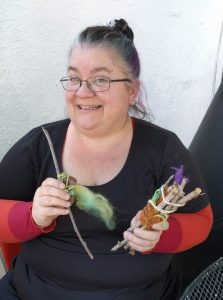
The power of creation. The very phrase could conjure up poetic descriptions of galaxies swirling into being or an intimate up-close look at new generations born and raised, whether children or small animals. For others, the word creation evokes the craftroom and the workbench, raw materials, stash, tools, and supplies. It can mean warm kitchens and bubbling hearths, comfort foods, and innovative new ideas.
Those of us who create handmade textiles have a strong sense of what it takes to process a fleece; spin a thread; weave a cloth; create a reliable dye bath from natural materials; hand-stitch, design, and knit a garment; or otherwise keep our families and loved ones in blankets and clothing or protected against the elements. We can recognize a handknit scarf at 20 paces and have probably held long discussions explaining the differences between crochet, knitting, and woven techniques.
If we focus on the word power, for some this means electricity, new gadgets, and space-age technology, manufacturing, and automation. How can I rev up this engine faster? More efficiently? How fast can I cook this meal? How soon can I get this delivered? Or more broadly, can I have power over my bills, my email, my social media, my laundry, my education, my retirement?
Sometimes, I find myself pondering whether every advancement is really worth it. My social media feed is filled with memes asking, “Are you old enough to remember?” featuring pictures of tools for home repair, home production, or manual handiwork. And I have friends dedicated to home sufficiency in gardening, canning, woodworking, and sewing. They joke about the zombie apocalypse and disaster recovery planning, including who needs to be part of any recovery team. The crafty, textiles friends are tagged to help clothe us when we need to rebuild civilization.
Simply creating things with my hands is power. It’s power over the capitalistic, consumer world I live in. Rather than be a passive victim and slave to the current fashion world, instead I make design decisions based on my own artistic preferences. I choose what color is in this season, possibly based on how my friend’s crop of dyestuffs grew in her garden. Or maybe I’m supporting a local dyer I only know over the internet, but we’ve commiserated over bouts with the flu or celebrating who just finished and defended their PhD thesis. All the while, we’re knitting for the holiday season or we’re spinning for a wedding shawl or we’re fermenting an indigo pot out back.
If you’ve been raised in a western textiles tradition, you may have only been taught about tool-based solutions. Which wheel should I buy to spin bulky? Do I need a new flyer to spin for this lace project? Which vendor has the best dyes for my protein fibers? Which loom should I buy, and how many various dents do I need? Can I use this loom for my tablet weaving project, or do I need a different-sized, different-shaped loom? Should I buy a warping board and a niddy noddy and a spinning weasel?
But what if my solutions were process based rather than tool based? Could I learn to spin with simpler tools? Could I weave with nothing much more than a few sticks, dexterity, and quite a bit of practice and memorization?[1]
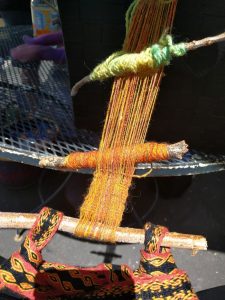 When you think about weaving at its core, it is simply a matter of wrapping strings around a collection of sticks and then manipulating strings among other strings. If you describe your loom, you’re telling me what shape your sticks have been arranged in: backstrap loom, inkle loom, rigid heddle loom, warp-weighted loom, four-harness – all are just descriptions of the shape of the sticks where you’ll manipulate the strings. I needed to demonstrate this description in a park one time, so I gathered a handful of sticks. I made some string on my drop spindle and proceeded to warp a small sampler. Need some heddles? Make more string. I didn’t need money or a large piece of equipment. I can make fabric with sticks and string.
When you think about weaving at its core, it is simply a matter of wrapping strings around a collection of sticks and then manipulating strings among other strings. If you describe your loom, you’re telling me what shape your sticks have been arranged in: backstrap loom, inkle loom, rigid heddle loom, warp-weighted loom, four-harness – all are just descriptions of the shape of the sticks where you’ll manipulate the strings. I needed to demonstrate this description in a park one time, so I gathered a handful of sticks. I made some string on my drop spindle and proceeded to warp a small sampler. Need some heddles? Make more string. I didn’t need money or a large piece of equipment. I can make fabric with sticks and string.
I am still learning how to manipulate strings – whether described as backstrap weaving or card weaving, the weaving complexity is not defined by how many thousands of dollars I spent on tools nor how large a workshop I need to dedicate to my craft. The power of my creation is limited only by the hours I put into my skill development, the research put into learning from those who have come before me, and the creativity of my own innovation.
Recently, a musician friend passed away. In lieu of a memorial service, we held a Life Celebration event. Dozens of friends showed up to sing, play music, and celebrate our friend’s life. I’d left the house without any spinning, but another friend was destashing art supplies from her home. I arrived at the event, and she handed me 4 ounces of wool. All I needed was a stick, which we found on the grounds of this industrial park. I spent a happy 5 hours twirling a stick and some fluff and making yarn.
Go ahead. Take all my worldly spinning goods. I will bounce back immediately. There’s always another stick somewhere. The power of my creation, of my creativity, is not limited by my possessions. Instead, I find an exciting challenge in taking scraps and creating something new. The problem fleece someone thought was only good for mulch? I can soak it in cold water, pick it clean, spin it by hand, and dye it with cochineal, and you would never know the wool wasn’t originally the best in the stash.
Rather than allowing ourselves to be disappointed at the limit of our budgets or our current collection of tools, we have the power to do more than just be a consumer. We are makers.
That’s the power of creation: making something greater than the sum of its parts.
Cat Ellen has been spinning for about 20 years and prefers a drop spindle over anything else. When not teaching people to make string from sticks and fluff, she can be found teaching American Tribal Style bellydance or copyediting performance material for the Santa community.
[1] I credit Abby Franquemont for teaching me to distinguish between tool-based and process-based solutions at PlyAway 2 in 2017.

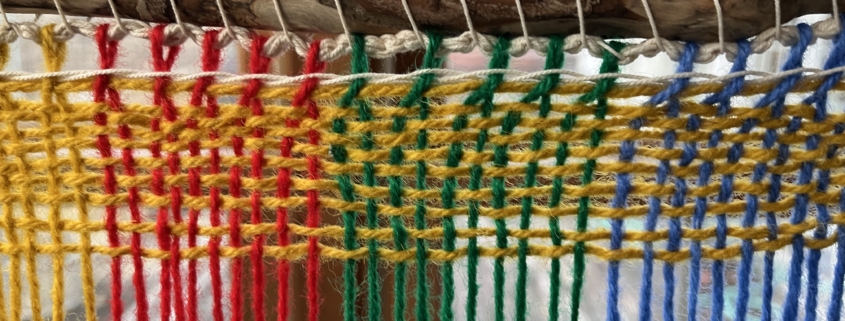
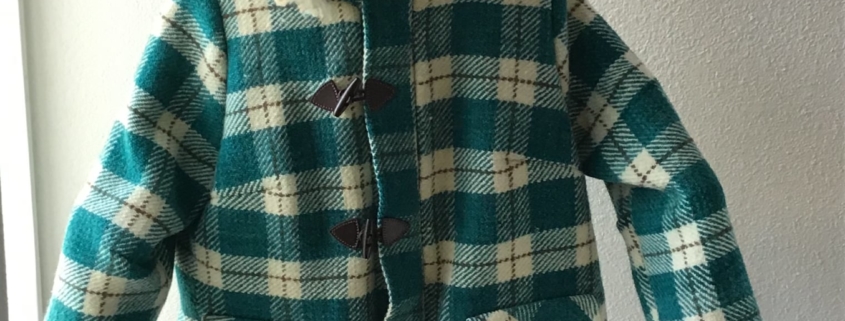
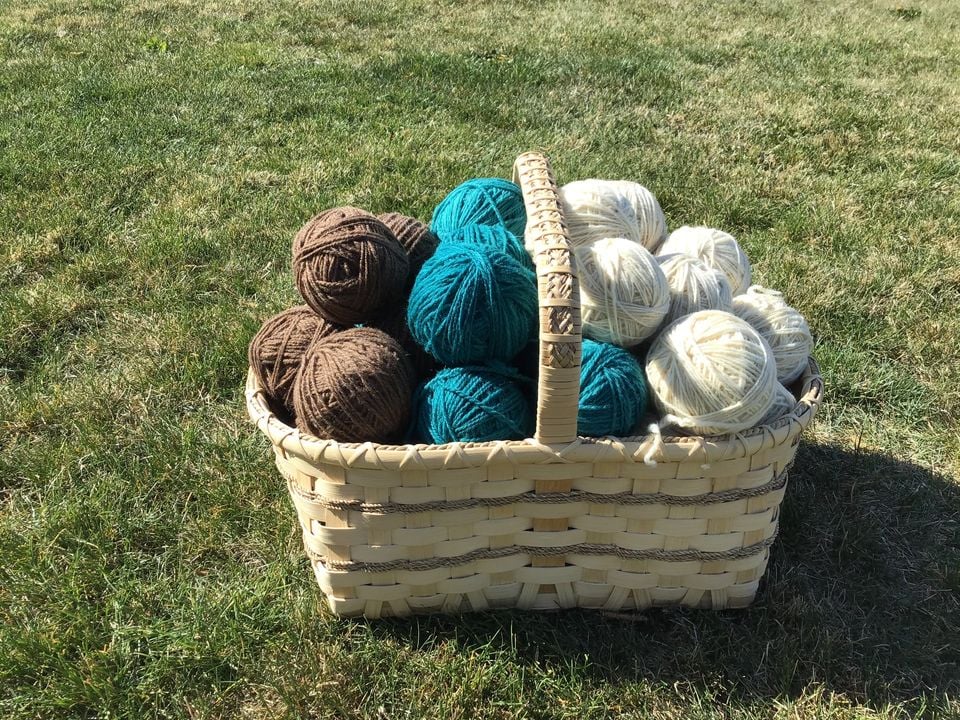
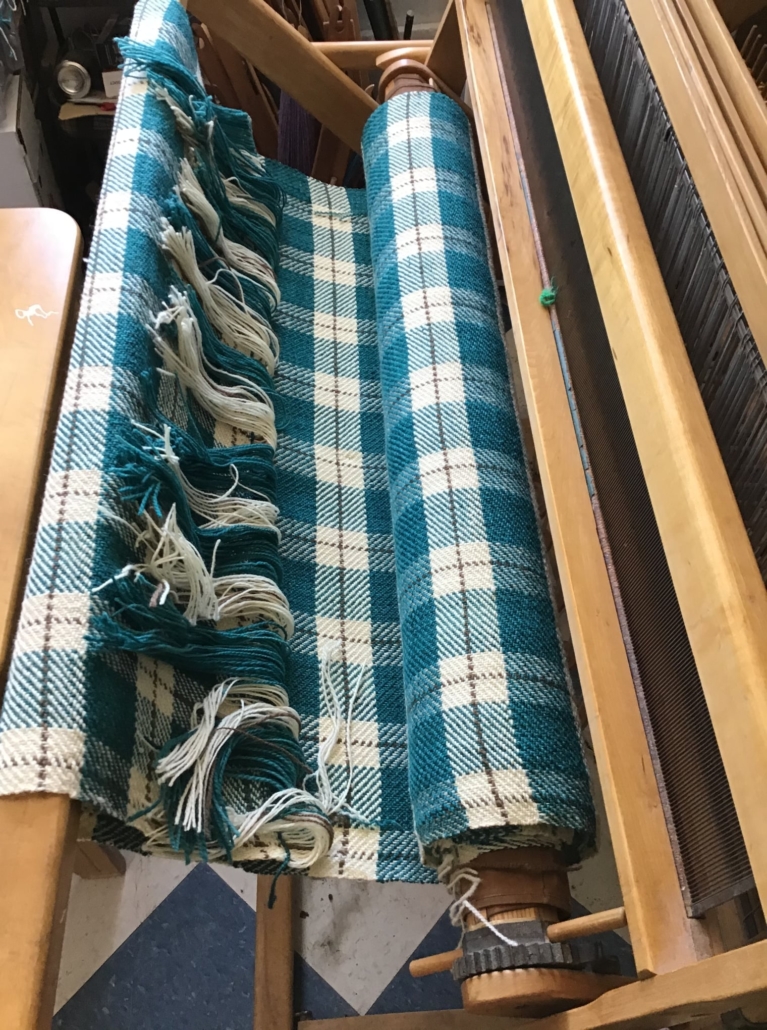
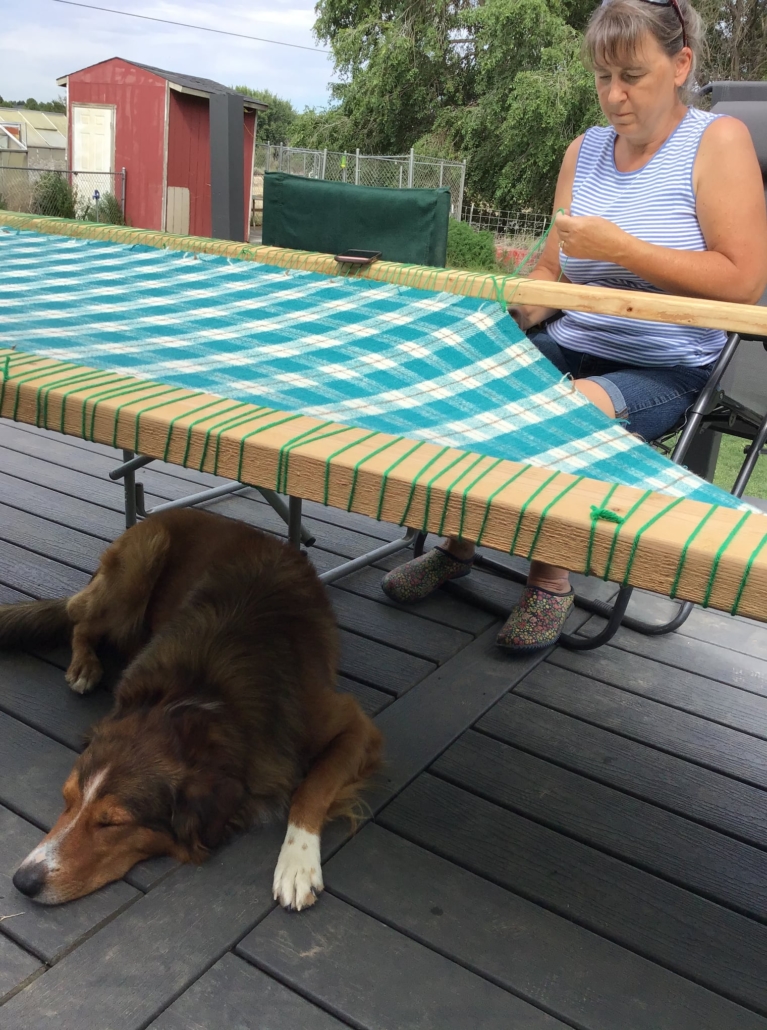
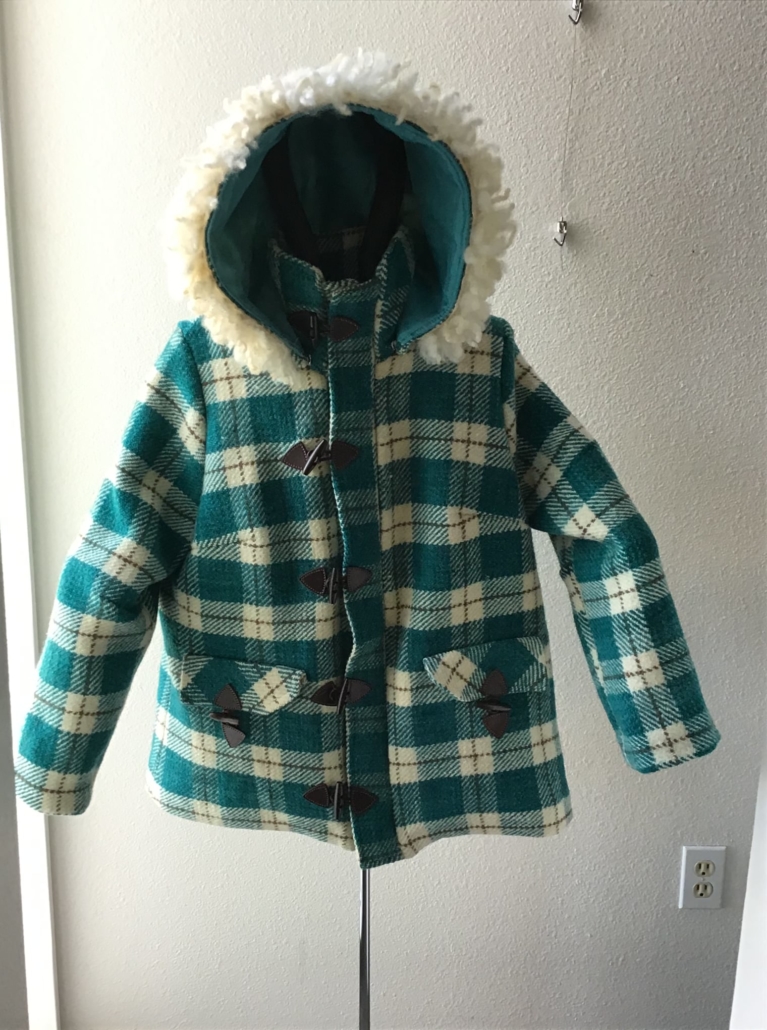
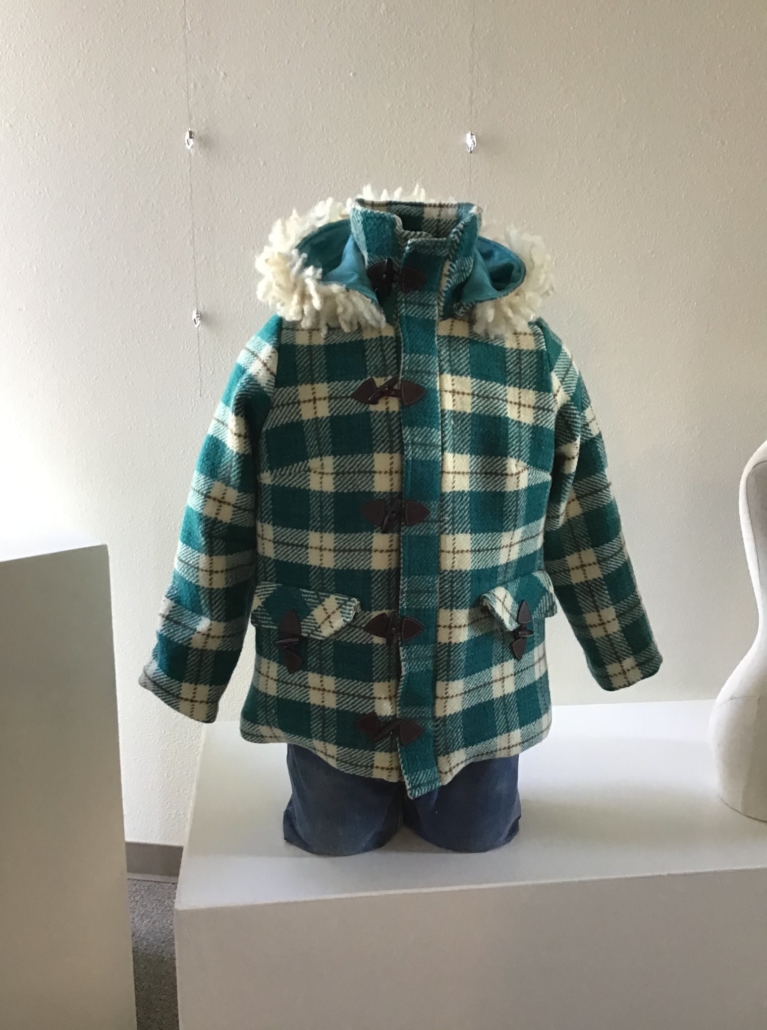
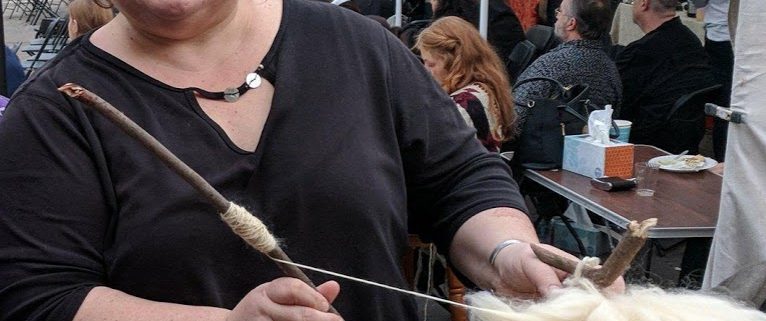

 When you think about weaving at its core, it is simply a matter of wrapping strings around a collection of sticks and then manipulating strings among other strings. If you describe your loom, you’re telling me what shape your sticks have been arranged in: backstrap loom, inkle loom, rigid heddle loom, warp-weighted loom, four-harness – all are just descriptions of the shape of the sticks where you’ll manipulate the strings. I needed to demonstrate this description in a park one time, so I gathered a handful of sticks. I made some string on my drop spindle and proceeded to warp a small sampler. Need some heddles? Make more string. I didn’t need money or a large piece of equipment. I can make fabric with sticks and string.
When you think about weaving at its core, it is simply a matter of wrapping strings around a collection of sticks and then manipulating strings among other strings. If you describe your loom, you’re telling me what shape your sticks have been arranged in: backstrap loom, inkle loom, rigid heddle loom, warp-weighted loom, four-harness – all are just descriptions of the shape of the sticks where you’ll manipulate the strings. I needed to demonstrate this description in a park one time, so I gathered a handful of sticks. I made some string on my drop spindle and proceeded to warp a small sampler. Need some heddles? Make more string. I didn’t need money or a large piece of equipment. I can make fabric with sticks and string.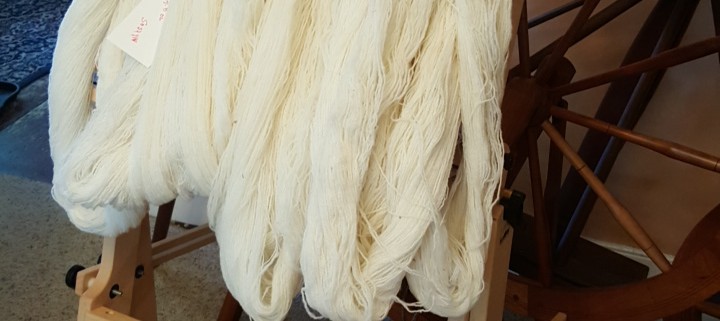
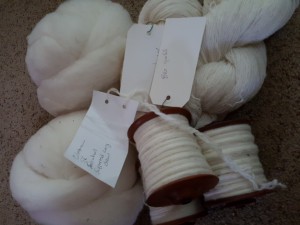 probably have at least another year of spinning and weaving before I finish the original plan and since I began I’ve thought of new questions and experiments I want to look into.
probably have at least another year of spinning and weaving before I finish the original plan and since I began I’ve thought of new questions and experiments I want to look into.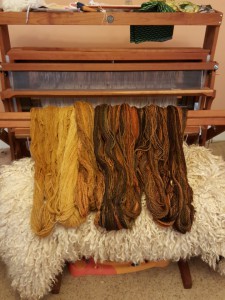 But that’s not really what I’m here to talk about. Many, many people have asked me how I can spin that much yarn that is the same. Same size, same color, same everything. There’s no real secret. But I’ll tell yoou what I know now that I’ve finished three skirts and I’m spinning for the 4th.
But that’s not really what I’m here to talk about. Many, many people have asked me how I can spin that much yarn that is the same. Same size, same color, same everything. There’s no real secret. But I’ll tell yoou what I know now that I’ve finished three skirts and I’m spinning for the 4th.